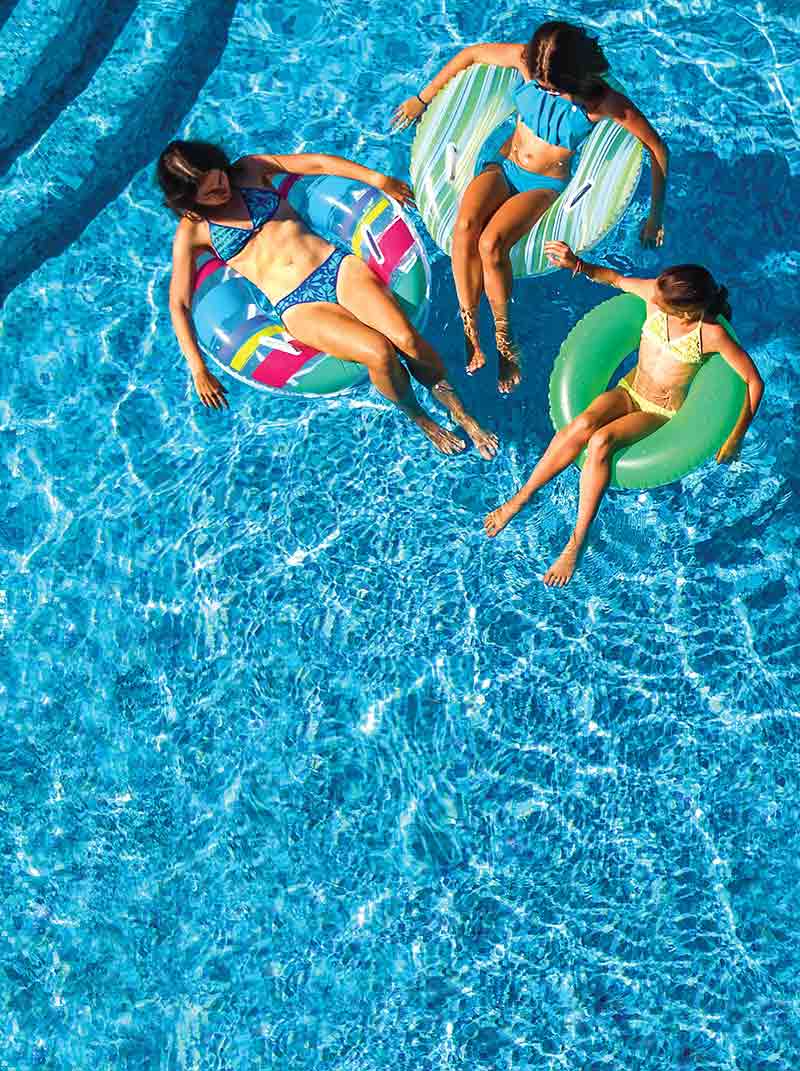Dive Right In: Pool Care Made Easy
Swimming pools can be a major asset for a property. These attractive amenities are big sellers for multifamily residents and hospitality guests. However, for those unfamiliar with pool care, the thought of maintaining a swimming pool can seem daunting. Fortunately, HD Supply Facilities Maintenance has some tips to help make it easy.
Pool Facts & Stats
According to the Association of Pool & Spa Professionals (APSP), there are 10.4 million residential and more than 300,000 public swimming pools in the United States. In 2009, the U.S. Census Bureau ranked swimming the fourth-most-popular recreational activity—and the most popular recreational activity for children and teens (ages 7-17)—in the nation. While chlorine products are used in most pools for sanitation, there are more than 1.4 million saltwater pools, according to an article by saltinstitute.org.
In-House Pool Care Is Easier Than You Think
While many properties choose to outsource their pool maintenance, the costs of this service can add up over time. HD Supply Facilities Maintenance offers an easy, in-house solution to controlling lost maintenance dollars. The AquaGuard® do-it-yourself pool maintenance system is a color-coded program that breaks down pool water testing and treatment into five easy steps: Balance, Chlorinate, Shock, Control, and Clarify.
Balance
Pool water pH must be properly maintained in order for all pool chemicals to work properly. A balanced pH also helps prevent eye and skin irritation as well as damage to filtration equipment and pool surfaces. It is recommended to test pool water every day. Ideal ranges are as follows:
- pH Balance: 7.4-7.6
- Alkalinity: 80-120 ppm
- Calcium Hardness: 200-400 ppm
Chlorinate
Chlorinating your pool daily is a consistent means of controlling and protecting your pool from algae and bacteria. A free chlorine range of 1.0-1.5 is widely considered ideal; however, this range may vary by state, so be sure to check your local guidelines. Never allow the chlorine level to drop below the ideal level. AquaGuard® offers both slow and fast-dissolving chlorinating products.
Shock
Shocking—or superchlorinating—your pool must be done periodically to remove waste materials like suntan oils, perspiration, body oils, and other organic wastes. Because sunlight can reduce the treatment's effectiveness, the best time to shock is early evening. Make sure the pool's circulating system is running, and keep swimmers out of the water until after the total chlorine level drops below 3 ppm.
Control
Controlling algae is an essential part of routine pool maintenance. Algaecides work hand in hand with chlorine and shock treatments to prevent and remove algae and bacteria buildup. To treat algae, you must first identify the type of algae present, and then use the task-specific algaecide to prevent or treat the problem. Read our Pool Maintenance Troubleshooting Tips to learn how to control specific types of algae.
Clarify
Residents and guests expect clear and sparkling pool water. Clarifiers keep your pool crystal clear by combining small particles into large ones for easy filter removal.
What About Saltwater Pools?
Saltwater pools rely on salt chlorine generators for sanitization, minimizing the amount of chemical and chloramine buildup in the water. In addition to its saltwater-specific pool care products, AquaGuard® products are also compatible with saltwater systems. Always be sure to follow your pool's specific testing and treatment instructions when using any products.
Need Additional Help?
HD Supply Facilities Maintenance offers direct pool care support through AquaGuard® at 1.800.SOS.POOL (1.800.767.7665), as well as basic pool maintenance and NSPF® Certified Pool Operator® Certification classes. Visit our professional training page or call 1.800.431.3015, ext. 12465, for more information on these and other maintenance skill-building courses.
Source:
See page 1570 of your V69 HD Supply catalog for more pool care information.

